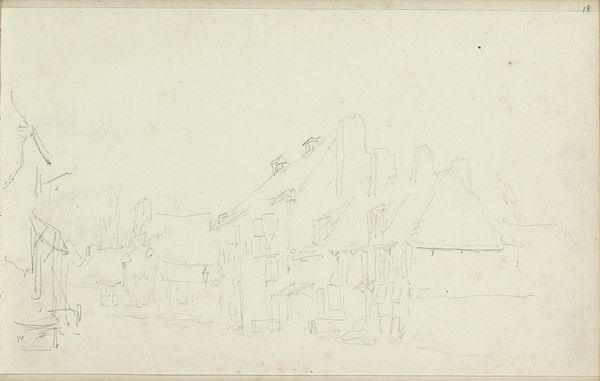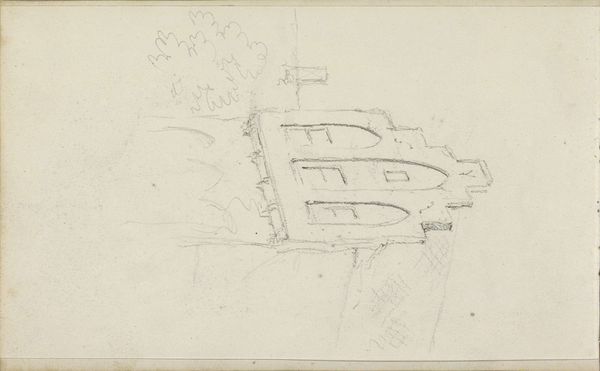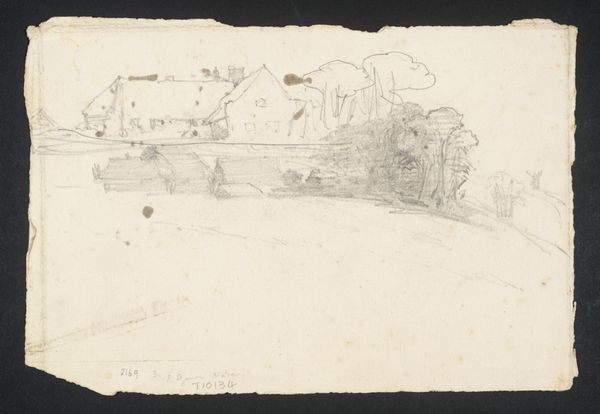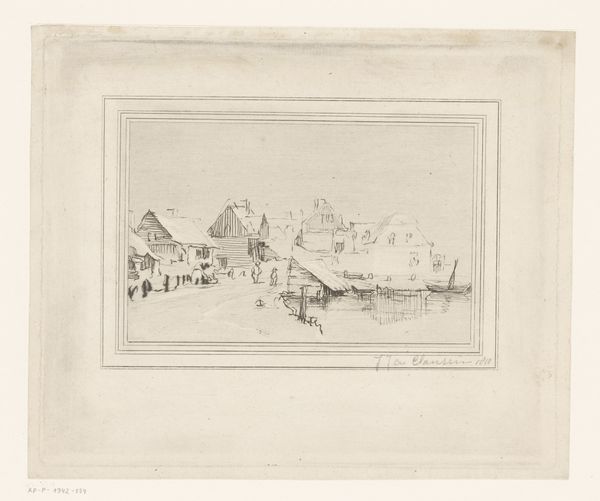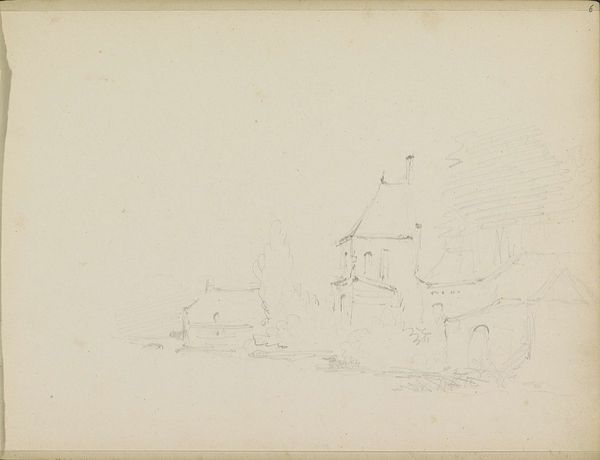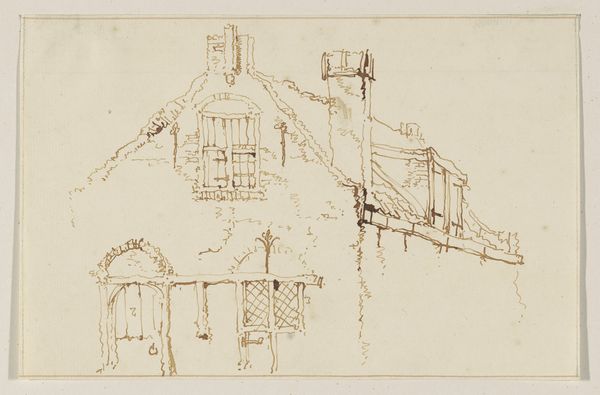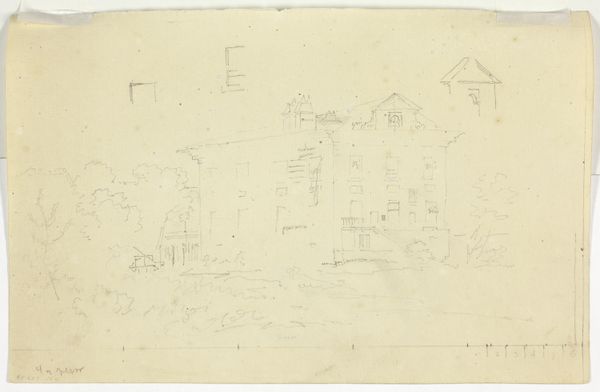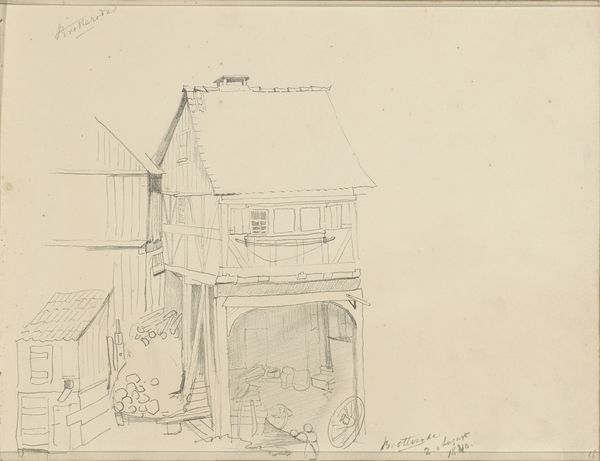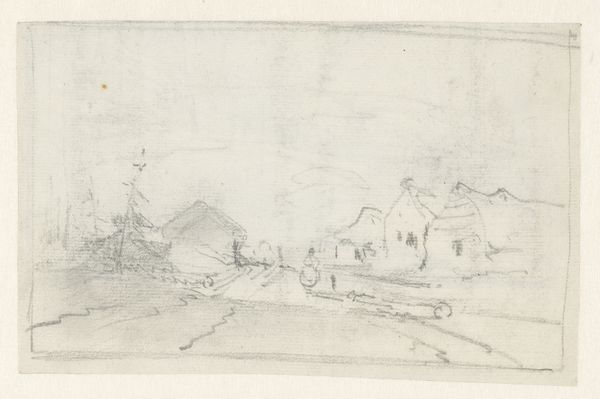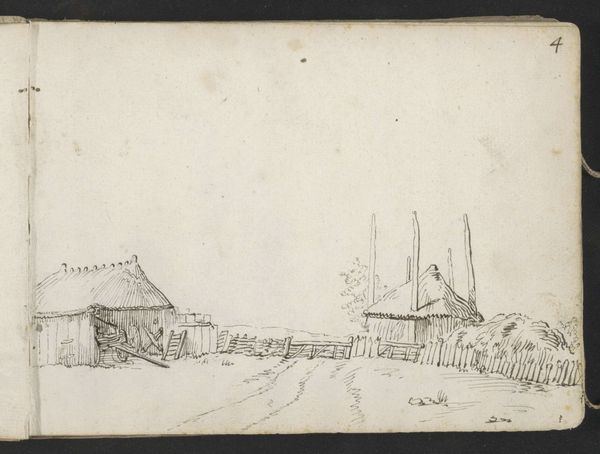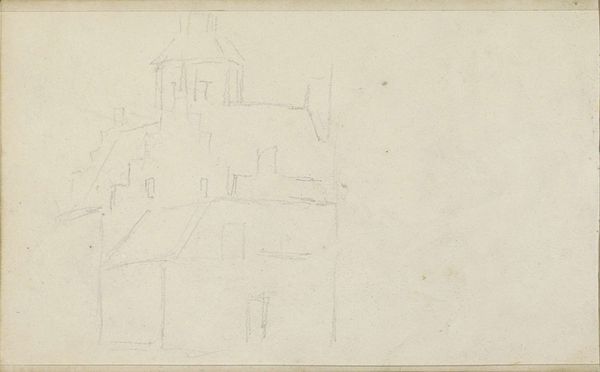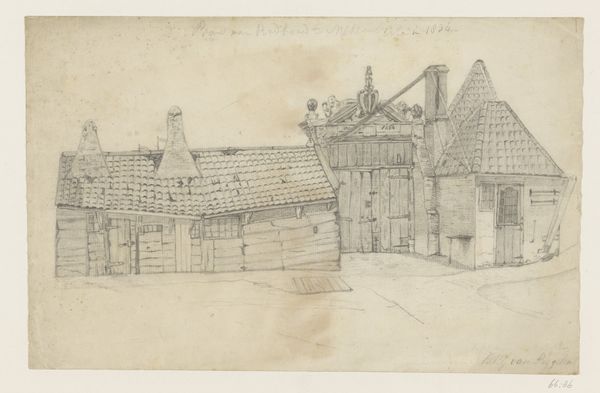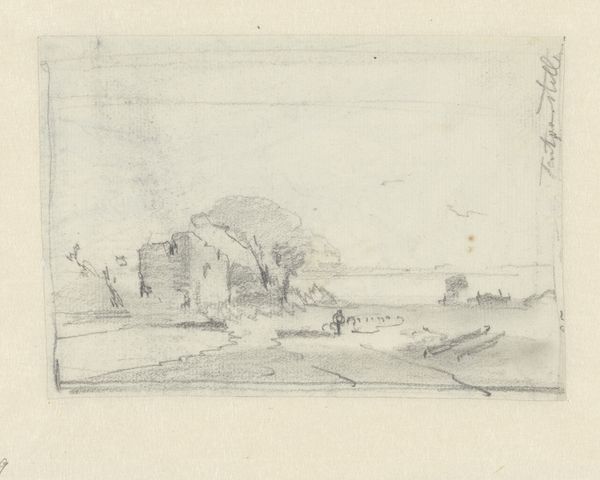
drawing, pencil
#
drawing
#
quirky sketch
#
dutch-golden-age
#
sketch book
#
incomplete sketchy
#
landscape
#
personal sketchbook
#
idea generation sketch
#
sketchwork
#
pen-ink sketch
#
pencil
#
sketchbook drawing
#
genre-painting
#
storyboard and sketchbook work
#
sketchbook art
#
realism
Dimensions: height 183 mm, width 270 mm
Copyright: Rijks Museum: Open Domain
Editor: Here we have Johan Conrad Greive’s “Huis aan een weg met schutting” from 1855, rendered in pencil. It feels like a fleeting glimpse, a captured moment. What do you see in the humble materials and technique of this sketch? Curator: I see a direct connection to the process of art making itself. Look at the visible strokes, the clear intention to represent the textures of the house, the fence. This isn't about illusionism; it's about revealing the labor involved in transforming raw materials like pencil and paper into an image, documenting a very specific moment in time. Do you notice how the sketch emphasizes the fence, seemingly more prominent than the house? Editor: Yes, actually. The fence almost seems to dominate the composition, boxing in the house. Curator: Exactly. The materials of that fence, rough-hewn wood likely sourced locally, and its construction, the visible hand of the carpenter – that speaks to the economic realities of the time. This is about more than just aesthetics; it is about the structures of daily life. Who benefited from that fence? Who performed the labor? The sketch serves as a tangible record of that system. Editor: So, even a simple sketch can tell us about the economic and social context in which it was made. Curator: Precisely. The rapid marks, the deliberate rendering of everyday objects – it all points towards the artist engaging with and interpreting the tangible world around them, rather than seeking idealization. Editor: It’s amazing to think about how the mundane materials and quick execution of the work, in some way, reflects the everyday life it depicts. Thank you. Curator: My pleasure. This piece highlights the value in paying attention to those seemingly minor material details – they hold entire worlds within them.
Comments
No comments
Be the first to comment and join the conversation on the ultimate creative platform.
